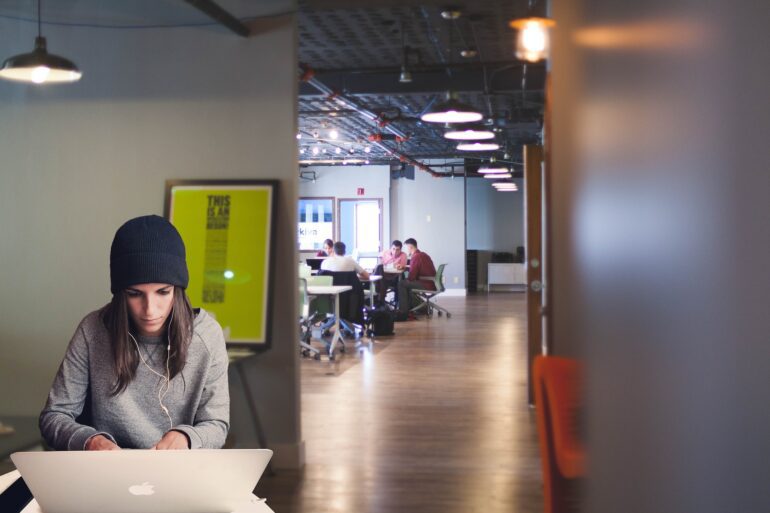TL;DR:
- Artificial intelligence (AI) has gained significant attention due to its potential to replace jobs.
- Goldman Sachs estimates that around 300 million jobs could be lost to AI, revolutionizing the way we work.
- AI automation can benefit companies by reducing costs and enabling business growth.
- Administrative, legal, and architecture/engineering jobs are most susceptible to automation, while labor-intensive careers face lower risks.
- Approximately 18% of the global workforce could be automated, with higher percentages in countries like the US, UK, Japan, and Hong Kong.
- There is potential for a mutually beneficial relationship between workers and AI, with automation freeing up time for increased productivity.
- Displaced workers may find reemployment in new jobs emerging from widespread AI adoption.
- Concerns have been raised about the rapid pace of AI development and its potential societal impact.
- Tech giants like IBM, Amazon, and Meta have already implemented AI-based automation, resulting in job losses.
- Striking a balance between technological progress and worker well-being is crucial, with calls for AI regulation to ensure job security and economic stability.
Main AI News:
Artificial intelligence has become a hot topic in recent times. With generative AI chatbots like ChatGPT capable of summarizing scientific articles, debugging faulty code, and even writing Microsoft Excel formulas on command, the potential of AI seems limitless. However, the flip side of this technological revolution is the looming threat to jobs. According to Goldman Sachs, approximately 300 million jobs could be lost to AI, indicating a significant disruption in the way we work.
Similar to past technological advancements, AI has the power to help companies reduce costs by automating specific processes, thereby allowing them to focus on growing their businesses. A research report by Goldman Sachs on global economics suggests that AI could automate up to 25% of the entire labor market. Administrative jobs face the highest automation potential, with 46% of their tasks prone to automation. Legal jobs follow closely behind at 44%, while architecture and engineering professions could see 37% of their tasks automated. However, labor-intensive careers such as construction, installation and repair, and maintenance are relatively less threatened, with automation rates of 6%, 4%, and 1%, respectively.
The study also highlights that AI has the potential to automate around 18% of the global workforce. In countries like the United States, United Kingdom, Japan, and Hong Kong, this percentage can climb as high as 28% of the country’s workforce. Despite these alarming figures, the study also suggests the possibility of a harmonious relationship between workers and AI. Occupations that are only partially exposed to automation could utilize their newfound free time to enhance productivity at work.
If you are concerned about your job being replaced by AI, Goldman Sachs offers a glimmer of hope. The investment bank anticipates that displaced workers will find reemployment in jobs that emerge as a direct result of widespread AI adoption. Additionally, the increased productivity of non-displaced workers could lead to higher levels of labor demand, further creating opportunities for those affected by automation.
Reflecting on the past, we can see how IT innovations sparked a demand for software developers. This, in turn, increased the need for education and subsequently created a demand for higher education professionals. It’s a chain reaction with far-reaching implications, raising concerns about the impact of AI on our society.
The potential displacement of 300 million jobs by AI is a significant worry for both workers and tech moguls. Prominent figures in the industry, such as Steve Wozniak, Rachel Bronson, and Elon Musk, have co-signed an open letter calling for a pause in AI experiments. Their fear is that AI development is progressing too rapidly for humans to keep up, potentially leading to the upheaval of our society as we know it.
In early May, tech giant IBM made headlines by announcing its plan to replace nearly 8,000 jobs with AI. Human resources professionals were the first to face this technological disruption. Many companies within the tech sector have adjusted their goals and downsized their workforce as they scramble to compete in the AI race.
Companies like Amazon and Meta have laid off thousands of employees, halted special projects, and discontinued product lines to make room for innovation with AI technology. It’s important to note that their objective is not to replicate ChatGPT but rather to leverage generative AI for transforming advertising and shopping experiences, leading to job cuts in the process.
Recognizing the potential consequences, the U.S. Chamber of Commerce has called for stringent AI regulation at the federal level to safeguard jobs, national security, and economic stability. Generative AI is undeniably a game-changing technology that has reshaped our world in countless ways. Although current chatbots lack true intelligence, their impact is evident in our daily lives.
As we navigate the rapidly evolving landscape of AI, it is essential to strike a balance between technological progress and the well-being of workers. While the transformative power of AI is undeniable, it is crucial to address the challenges it poses and ensure that the benefits are shared by all. By doing so, we can navigate this new era of automation while preserving the fabric of our society.
Conlcusion:
The rise of AI presents both opportunities and challenges for the market. While automation can lead to increased efficiency and cost reduction for companies, it also raises concerns about job displacement. It is crucial for businesses and policymakers to navigate this paradigm shift carefully, ensuring that the benefits of AI are shared equitably and that measures are in place to support workers affected by automation. By doing so, we can harness the transformative power of AI while preserving a thriving and inclusive job market.

